Curious about sweat bees in Florida? Discover their surprising presence and how it might affect your next Sunshine State escapade.
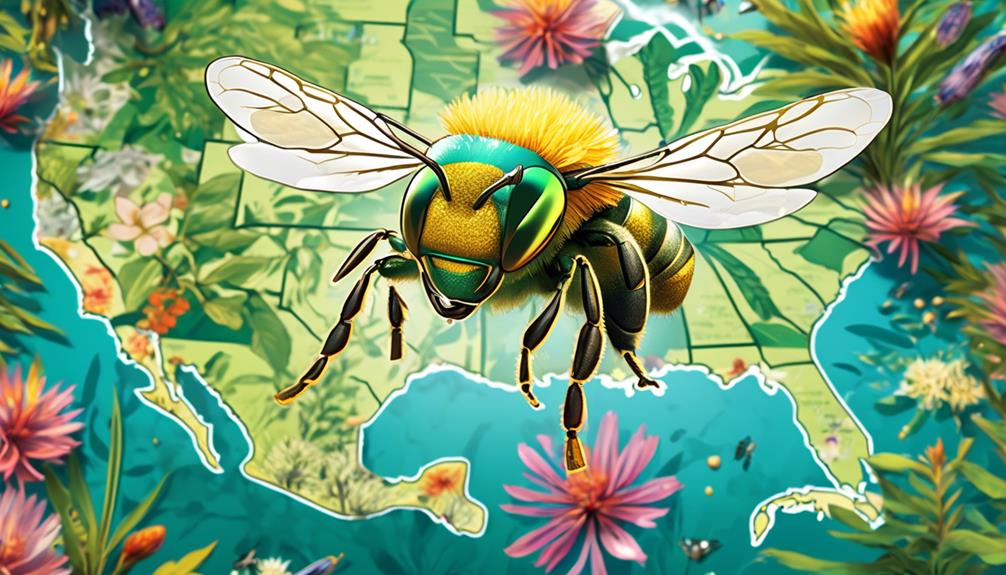
Are There Sweat Bees in Florida
Imagine you're being swarmed by a buzzing horde of bees, drawn to the beads of sweat trickling down your forehead on a hot Florida afternoon. You're not alone in wondering if these tiny, relentless creatures are the infamous sweat bees.
These insects, with their uncanny attraction to human perspiration, are a common occurrence in many parts of the world. But are they present in Florida?
Without revealing too much upfront, let's just say their presence or absence might surprise you and could change how you view your next outdoor adventure in the Sunshine State.
Key Takeaways
- Sweat bees are a diverse group of bees that are important pollinators in Florida.
- Sweat bees are attracted to human sweat because they extract essential nutrients like sodium, chloride, and potassium from it.
- Identifying sweat bees in Florida can be challenging as they are small, have a metallic sheen, and nest in the ground.
- Sweat bees play a crucial role in the ecosystem by pollinating plants, contributing to biodiversity, and serving as a food source for other organisms.
Understanding Sweat Bees
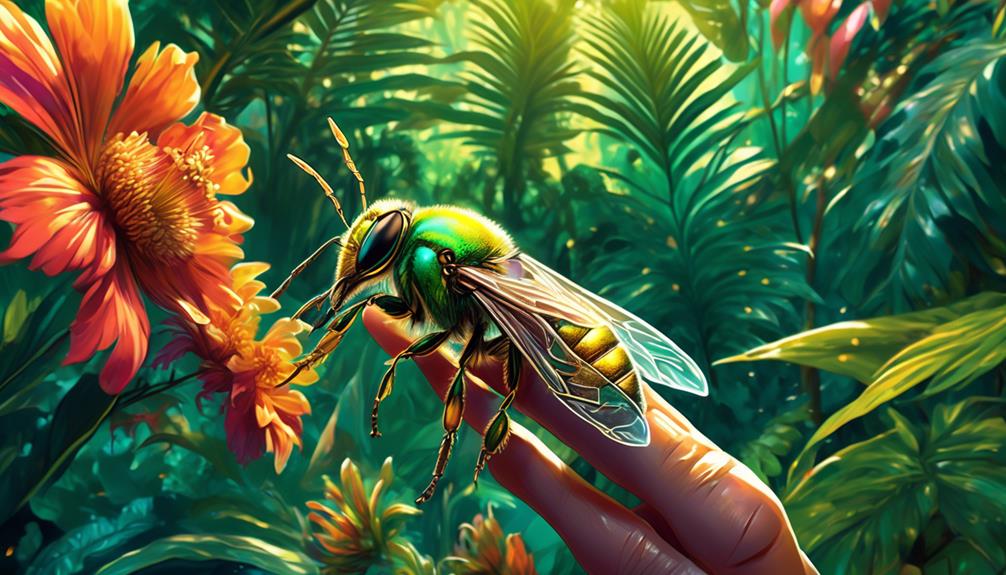
You might be surprised to learn that there are over a thousand species of sweat bees worldwide, and they've got a unique fascination with human perspiration. Sweat bees, or Halictidae, are drawn to sweat as it provides them with the salt they need for survival. They're tiny, often mistaken for flies, but don't be fooled, they're bees alright!
These little creatures aren't typically aggressive. You're more likely to get stung by a sweat bee if you accidentally squish it against your skin. Their sting is mild compared to other bees and it's their pesky, persistent behavior that might annoy you more than anything.
Sweat bees aren't just annoying, they're also important pollinators. They play a crucial role in pollinating crops and wildflowers, contributing significantly to our food production and biodiversity. Despite their size, their impact is enormous.
Sweat Bees' Attraction to Humans

While their tiny size and crucial role in biodiversity might pique your interest, it's their peculiar attraction to humans that truly sets sweat bees apart. Though they're called “sweat bees,” they're not after your sweat per se. Instead, they're drawn to the salt in your sweat, which provides essential nutrients.
You might wonder why sweat bees are attracted to humans. Here, let's break it down in simple terms:
- Sweat bees, like other insects, need salt for survival. In their case, they get it from human sweat.
- Sodium: It's one of the key nutrients that these bees extract from your sweat. It helps in their nerve function and reproduction.
- Chloride: It's another crucial nutrient that sweat bees obtain from your sweat. They need it to maintain fluid balance and pH level.
- Potassium: They also extract potassium from your sweat, which is essential for their muscle function and fluid balance.
Identifying Sweat Bees in Florida
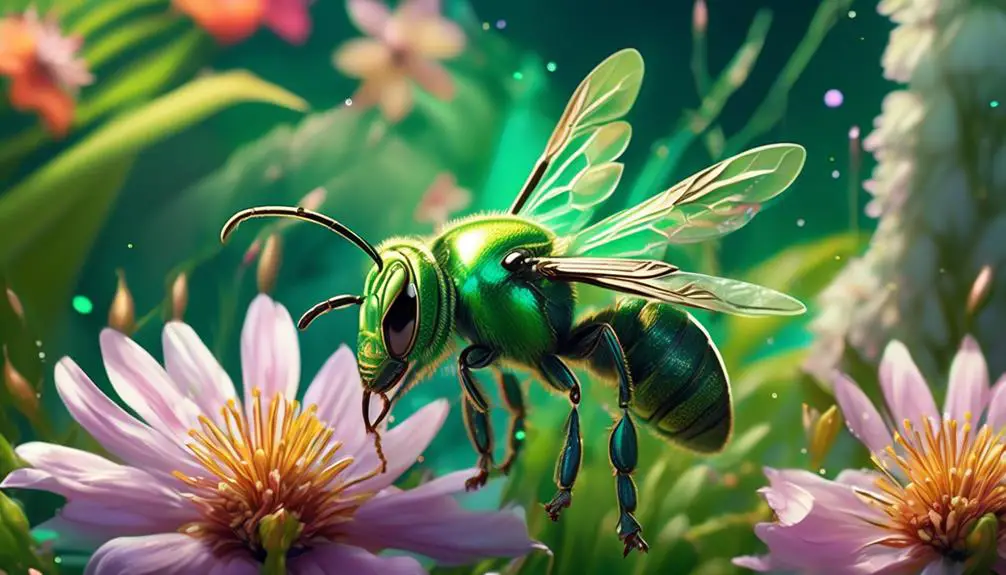
In the sun-soaked state of Florida, identifying sweat bees can be a cinch if you know what to look for. Don't let their small size fool you. These bees are usually less than half an inch long. They're not your typical yellow and black striped bees. Instead, they often have a metallic sheen that can range from copper to green, blue or even black.
Sweat bees are solitary creatures, meaning you won't find them in large hives like honeybees. They like to nest in the ground, so if you see a tiny bee hovering near the soil, it may just be a sweat bee. And yes, they're attracted to human sweat, hence their name.
Look closely at their wings. Do you see the veins forming a unique pattern? That's a good clue you're dealing with a sweat bee. Remember, they're generally harmless unless provoked. So, if you come across one, there's no need to panic.
Now you're well-equipped to identify sweat bees in Florida. Keep these pointers in mind and you'll have no trouble spotting them in your own backyard.
Sweat Bees' Role in the Ecosystem
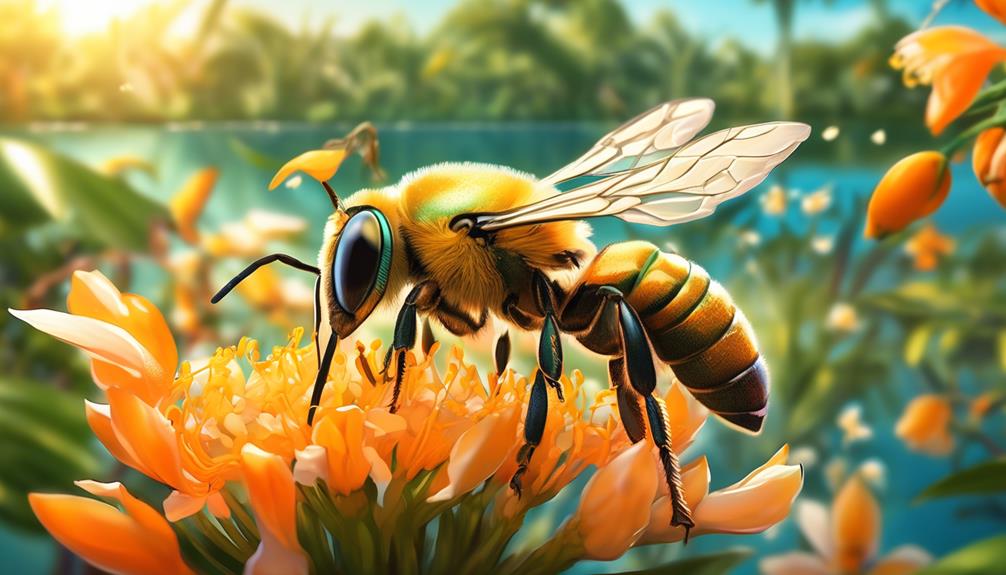
Now that you're familiar with identifying sweat bees, let's explore their crucial role in Florida's ecosystem. Despite their tiny size, sweat bees play a significant part in maintaining the balance in our environment. They're vital pollinators, contributing to the reproduction of various plants species, which in turn provides food for other creatures.
Here's how they impact our ecosystem:
- Pollination: Sweat bees are effective pollinators. They carry pollen from the male parts of a flower to the female parts, enabling fertilization and the production of seeds.
- This is critical for the survival of many plants.
- It also affects the food supply for many species.
- Pollination also contributes to biodiversity, as it helps plants to reproduce and spread.
- Food Source: They also serve as a food source for various insects and birds.
- Indicator Species: Sweat bees can act as an indicator species. Changes in their populations can signal shifts in environmental health.
How to Handle a Sweat Bee Sting
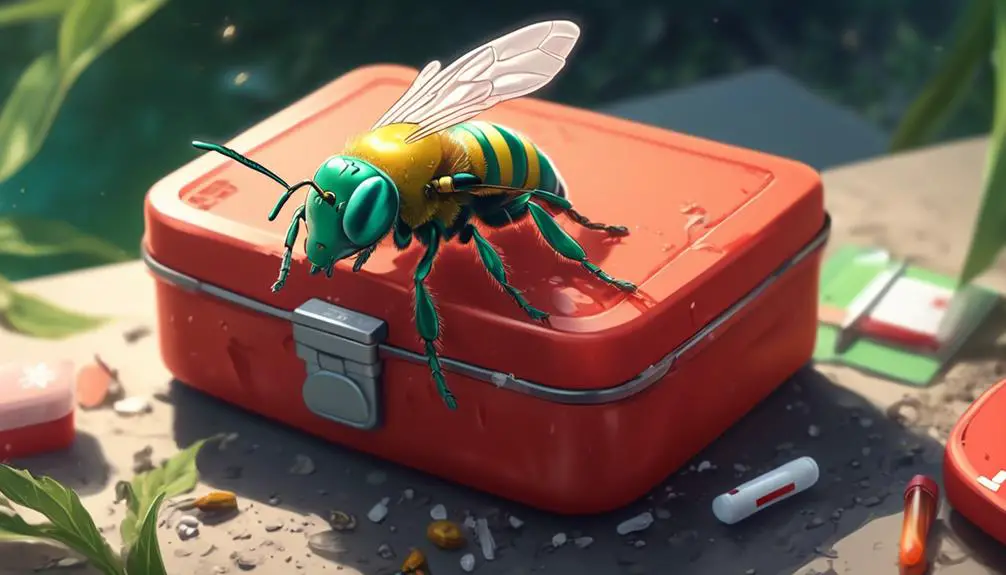
Despite their significant role in the ecosystem, getting stung by a sweat bee isn't a pleasant experience, so here's what you should do.
Don't panic. Though painful, sweat bee stings are usually harmless unless you're allergic. First, check the sting site. If you see a small black dot, that's the stinger. Remove it gently with tweezers, but be careful not to squeeze any venom into the wound.
Next, clean the sting area with soap and water. This helps prevent infection. After cleaning, apply a cold pack to reduce swelling and numb the pain. If the area becomes red or swollen, over-the-counter pain relievers and antihistamines can help.
It's essential to keep an eye on the sting area for a few days. If you notice increasing redness, swelling, or pain, or if you develop a fever, seek medical attention. These could be signs of an infection or an allergic reaction.
Lastly, remember, sweat bees are attracted to sweat and sweet scents. So, if you're out and about in Florida's summer, try to keep yourself as scent-free as possible to avoid attracting these little buzzers.
Conclusion
Yes, sweat bees do buzz around Florida. They're drawn to your perspiration, but they play a crucial role in our ecosystem. If stung, it's usually a minor inconvenience.
Remember, their presence is a sign of a healthy environment. So, next time you encounter these tiny, metallic green or black insects, show some appreciation. After all, they're working hard to keep Florida's flora blooming beautifully.
Let's coexist peacefully with our small, sweat-loving friends.


